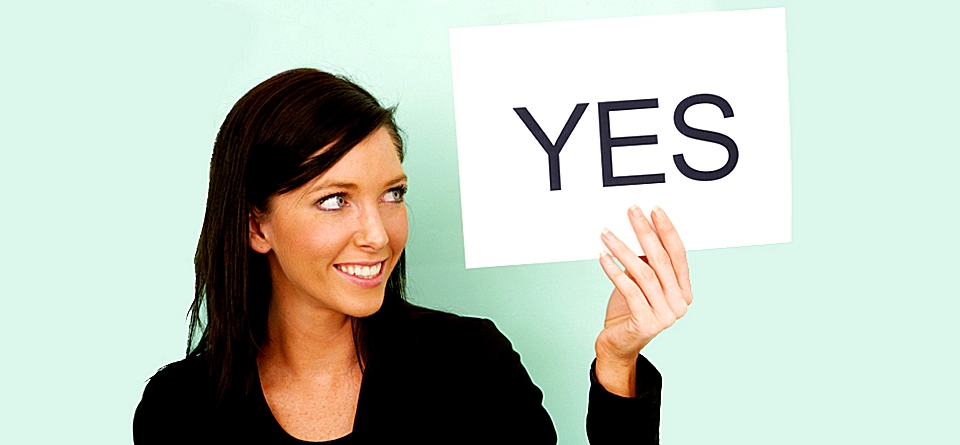
When one is on the path to achieving their highest and best, often the progress that is made is commensurate to the method used in reference to your yes and no responses.
Basically, there are two kinds of yes, in terms to how you respond to opportunities that present themselves at any given time. Likewise there are two ways to use the word no. Any time you say yes to something the decision is inclusive, that is to say that what you said yes to will be added or included in your life, while no is exclusive of excludes certain things from being present in your life.
I know some of you are saying, “You left out ‘maybe’.” Maybe is a decision to delay decision-making until later (which can be a smooth sleight-of-hand gesture, effectively allowing you to initiate a clearly negative response until a more convenient time). Nonetheless, “maybe,” is not a decision, it is a delay tactic, and may be warranted in the event more information is needed to make a more educated decision.
This expresses the importance of holding in your mind a clear idea of what exactly is your highest and best. What does it look like? What does it feel like? Where are you and where do you want to be? The law of attraction is the energy that closes the gap between what you want and where you are, it can also move you further away. Effectively managing your affirmative and negative responses can move you toward making your dreams come true expediently.
Any time you face a choice (we face hundreds, if not thousands, of choices every day) having a clear picture of what you want and where you want to be can be of the most importance, especially in decision-making. This is why we spend time clearly defining what you want, possibly utilizing T charts, early on in a coaching relationship.
Saying Yes to My Highest and Best
Given your options, you can make decisions based on your vision. It’s as easy as saying, “Yes,” to those things that move you closer to your ultimate goal or dream. This sounds easy, but often we find ourselves…
Saying No to what is my highest and best
What? Why would you do that? Because there exists within us subversive programming that resides in our unconscious that might lead us to believe that we are not derserving, not worthy, not educated enough, don’t have enough money… and the list of negative thoughts keep us from saying the proper response, which is, “Yes,” to those things that move us closer to what we want. Saying no to the things that would move you closer, creates more distance between where you are and where you’d like to be.
Saying Yes to what is not in our best interest
Then there is our tendency to say, “Yes,” to things that are clearly not in our best interest. It might feel better to have some temporary sense of feeling good, without thinking about the consequences or the effects of our affirmative reaction to something that will not move us closer to what we want. In fact, we may move even further away from what we ultimately want. (One extreme would be participating in addictions.)
Saying No to what is not in our best interest
Though it may take some bravery and courage, saying, “No,” to what is not in our best interest will keep us from falling back and moving us further from the life that we desire. Excluding things that are not in our best interest moves us closer to what we want. Saying no to the things that are not in our best interest is almost as effective as saying, “Yes,” to the things that are.
More Good than Bad
One of my clients uses what he calls the “More Good than Bad Rule,” in all of his decision-making. He possesses a brilliant analytical mind, reduces every decision to an equation, and his inclusive final answer is based on this: If a thing is more good than bad, it’s a yes.
On the other hand, if a thing is more bad than good, then it is an immediate no and exclusion.
He’s very effective at taking action of his negative decisions, which I disagree on. I will usually err on the side of inclusion rather than exclusion in business, which sometimes pays off. But I must admit his cut-throat style of eliminating anything more bad than good makes more sense in the long run (though may cause problems in the short-term).
The process that we use to influence our ability to effectively,
let your yea be yea; and your nay, nay
is a fluid process of growth and change.
How can you better wield your decision-making skills today?